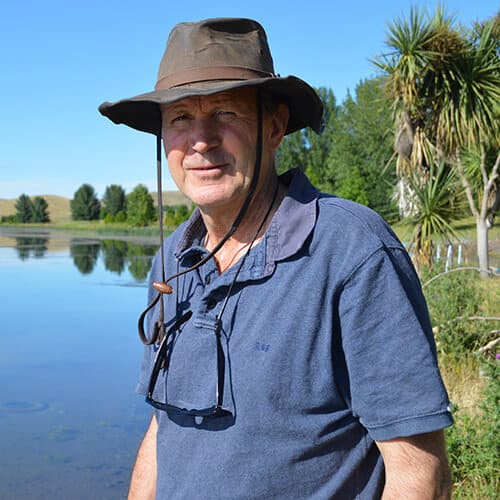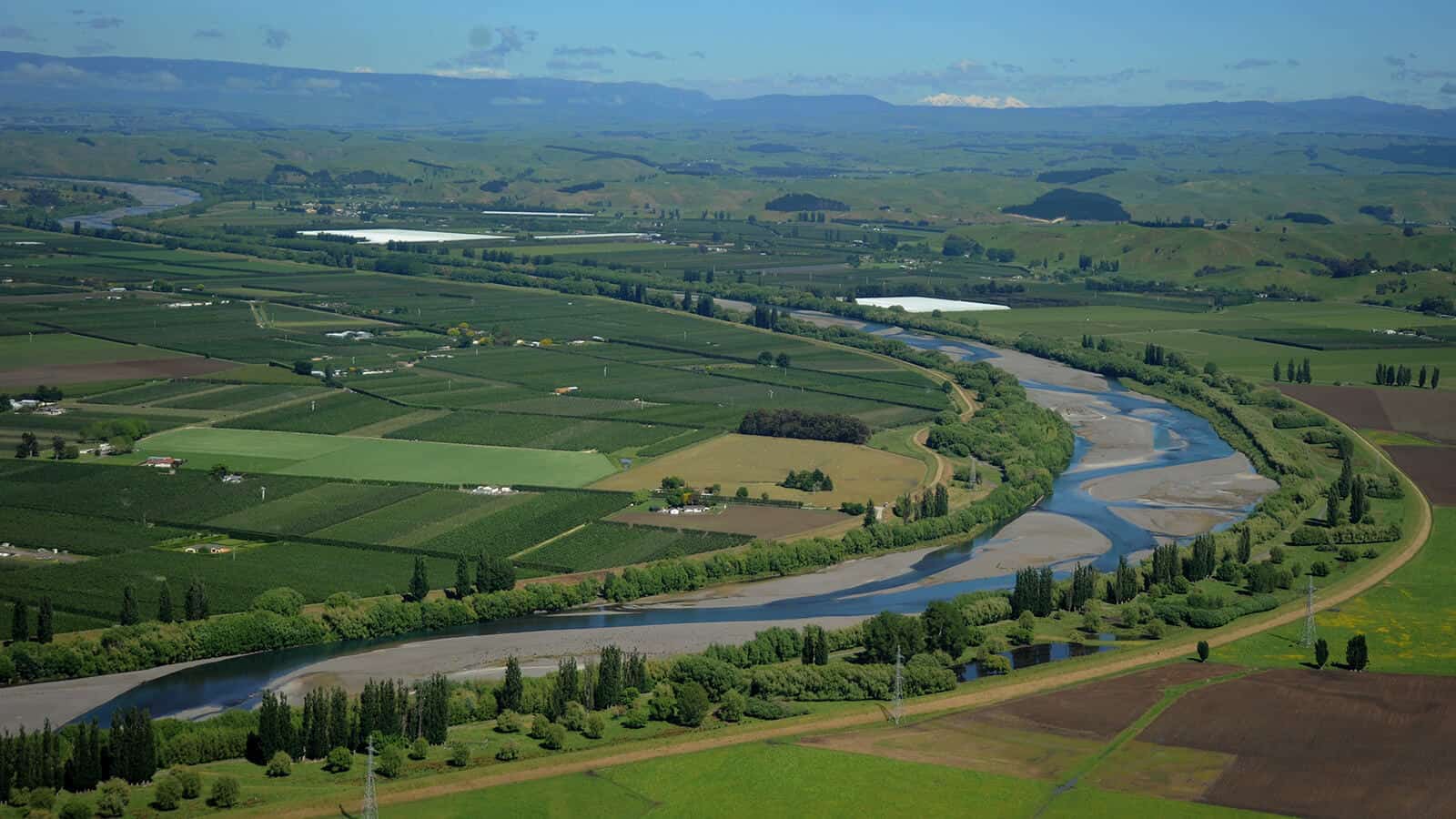This year will see a shift in the focus of public debate from the fate of the Ruataniwha dam to the management of water on the Heretaunga Plains, and from the perceived threat of amalgamation to the reality (or not) of inter-council collaboration.
Water Issues
If all goes to the plan of its advocates, the fate of the CHB dam scheme will be decided in the first quarter of the year.
The remaining hurdles to overcome are a pivotal legal challenge to the land swap that enables a dam reservoir to be formed, securing the commitment of a suitable major investor and/or bank lender, and selling the requisite water purchase agreements to guarantee adequate cash flow to sustain the project.
Regarding the land swap legal challenge, filed by Forest & Bird, all parties expect the High Court to render its decision in early January. That could well have happened by the time you are reading this.
Forest & Bird argued that the Department of Conservation improperly downgraded the high classification of the protected land at issue, so that it could then agree to a transfer of that land to HBRIC, to be inundated by the dam reservoir.
While Forest & Bird disagrees strongly with the merits of this particular swap, its broader concern is that if such a downgrade of classification, as processed in this instance, is deemed permissable, then no conservation land in New Zealand is in fact protected from economic development, as current law would safeguard.
If the Court has ruled in F&B’s favour, the dam is dead. You can skip the next few paragraphs and move on the the Heretaunga Plains issues!
If the Court has ruled in HBRIC’s favour, the last legal obstacle to the dam has been cleared, leaving the investor package and the actual water purchases to be reckoned with.
HBRIC has been reporting that three potential institutional investors are seriously interested in the scheme and ‘kicking the tires’. For some time, despite two previous investors walking away, HBRIC has insisted that finding investor money was the least of its problems in getting the project off the ground.
By definition, the selected investor HBRIC proffers to the Regional Council will be one whose financial terms are already agreeable to both parties. So the only remaining sticking point would be if the investor finds something unacceptable as it proceeds with its own due diligence on all aspects of the project. For example, as it dug more deeply, it might not be comfortable with water take-up (i.e., revenue) assumptions.
But assuming no hiccups on that score, the paramount challenge that remains for HBRIC is securing a level of water purchase that, from the outset, ensures the financial viability of the scheme, near and long term.

Water purchases
Apart from environmental impacts of the proposed scheme, nothing has been more challenged than HBRIC’s success (or not) at getting farmers to contractually obligate themselves to yearly water purchases for 35 years, whether or not they use the water.
At its last accounting in December, HBRIC had signed contracts for 30.2 million cubic metres of water (annually), against an indicative requirement (to be financially viable) of approximately 46 million.
Contracts accounting for another 11.9 million cubes were said to be awaiting co-signing. In this category would fall the 1.5 million cubes that the CHB District Council is considering purchasing for community drinking water. That decision cannot be made until a special public consultation process has been completed.
Back in October, the last time HBRIC reported the number of farmers who had purchased water, the figure was 73, with another 54 in the ‘awaiting signing’ category. And at that time, 173 farmers had declined the dam water out of a total prospect pool of 427 properties.
Not surprisingly, HBRIC has stopped reporting the small number of farmers actually taking up the water proposition. The prospect pool has shrunk to a remaining 140 or so properties as HBRIC works toward its 46 million cube minimum (keeping in mind that HBRIC’s business case does not project an operating profit until water uptake is 72%, or about 75 million cubes).
Hence the attempt to charge CHB residents, who currently get their drinking water for free, for stored water, and other stratagems to help close the revenue gap.
Other stratagems include finding prospective land purchasers from outside the area who might purchase CHB land – and with it, water rights that the current owners have declined. So HBRIC has become a land agent.
Another stratagem is to find buyers who would be prepared to purchase water rights only (no land), then bank the water for future sale to property owners who would later ‘see the light’ and want stored water. In the meantime, these rights holders, expecting to make an eventual profit, would pay the annual water fee for their banked water, helping HBRIC meet its minimum cash flow requirement. So HBRIC is in the water speculation business as well (although the whole project might be seen as that).
All in all, it seems a heap of expensive heavy lifting has been done in attempting to supply a minimum amount of occasionally needed water to a small number of actual farmers … maybe up to 150 farmers. There doesn’t appear to be an enthusiastic stampede toward this dam water, but HBRIC – nothing if not financially clever – remains undiminished in its own enthusiasm.

Dam benefits
A further issue arises from the matter of who actually buys the water and for what actual purpose?
A ratepayer investment in the dam must be justified by some public good derived therefrom (as opposed to, say, merely increasing farmers’ land values). HBRIC claims that public good to be environmental benefits (highly debatable, you decide) plus economic growth.
The extant business plan reviewed for HBRC by Deloitte forecast a land-use pattern where dairying increased from 13% of the existing area to 30%, with other uses remaining essentially the same, with the exception of sheep and beef, which would decline from 21% to 7%. Dairying of course has become less ‘fashionable’, so now HBRIC claims the land use will shift more toward cropping, orchards and vineyards (see David Cranwell’s article on p88 for the difficulties with that assumption).
All the claimed economic benefits of the scheme (apart from the more certain construction-related work that will disappear once the dam is built) arise from these assumptions about what new production gains and value will be generated from the additional availability of water.
Deloitte’s initial review commented on the speculative nature of the economic projections. Yet despite the shifting land use assumptions, regional councillors have yet to see any re-projection of the claimed economic benefits of the scheme. Worse still, the council specifically rejected the request of some councillors to have Deloitte review the claimed benefits in its final report to come.
So, while HBRIC attempts to tick the boxes, substantial issues remain for councillors and their constituents to consider. However convinced HBRIC might be that it has met the Council’s investment conditions, only the Council can make the final assessment.

On to Heretaunga
The Ruataniwha water storage scheme, a $600 million proposition including farmers’ on-farm costs; the Tukituki Plan Change for handling that catchment’s fresh and groundwater, now being implemented; and the sewage treatment installations intended to deal with Waipukurau/Waipawa wastewater, where the verdict is still out, have set the water management context for the CHB.
With all this attention to CHB’s water issues, the other catchments in the region, most notably the waterways and aquifers of the Heretaunga region, have been starved for HBRC attention and resources.
According to Stats NZ, Hastings District, home to the Heretaunga Plains (and other productive land of course), generates 25% of the region’s $1 billion in annual exports through Napier Port. CHB generates 13%; Napier 5%; Wairoa 6%.
The primary vehicle for addressing future water issues on and under the Heretaunga Plains is the TANK stakeholder group and process. Its focus encompasses the Tutaekuri, Ahuriri, Ngaruroro and Karamu (hence the acronym) surface waters and associated wetlands and aquifers.
The group includes about three dozen stakeholders representing all sectors of the community – farmers and growers, Maori, environmentalists, public health, councils, DoC.
TANK’s mandate is to recommend the overall approach to be used in managing the relevant waters – in terms of quality, allocation, competing uses, potentially water storage – with these matters then addressed in formal resource management plans to be crafted and adopted by the Regional Council and its Regional Planning Committee.
The issues before TANK are complex and monumental in terms of the environmental and economic sustainability of a region that can be fairly regarded as the most significant driver of Hawke’s Bay’s $6.4 billion economy. The stakes are huge.
So far the TANK process has consumed nearly three years and about $600,000, yielding some areas of broad and ‘safe’ agreement. But it is yet to tackle the specifics of the tough issues and choices that must be made … and that is a cause of mounting frustration on the part of all participants.
Recently, the frustration reached a flash point, with members threatening to abandon the process. A widely endorsed demand was expressed for fresh leadership of the TANK initiative. Regional councillor Peter Beaven (who currently serves on TANK with regional councillors Christine Scott and myself) was put forward as a chairman or coordinator to provide more strategic and political guidance and impetus to the process. That recommendation was endorsed by all members of TANK, with the single exception of councillor Scott.
In other words, some 30-plus TANK participants collectively identified the obstacle to progress and virtually unanimously agreed on a path forward.
However, at their December meeting, a majority of regional councillors – Wilson, Dick, Hewitt, Pipe and Scott – four of whom have no involvement in TANK whatsoever, refused to endorse TANK’s action. [Readers are urged to view the video of the 16 December HBRC meeting to get a full flavor of the hypocrisy involved – video available on the HBRC website.]
With his role rejected by Council, councillor Beaven resigned from TANK.
It remains to be seen how the TANK group will respond to this stick in the eye. If TANK members cannot even organize themselves as they see fit, why should they expect the Regional Council to pay any attention to recommendations the group might make on substantive matters of water policy – like minimum flows, water storage or augmentation options, and priorities for water use?
And yet those who run HBRC wonder why the organization has so little trust and credibility in its bank account.

Poor decision-making
While TANK struggles to meaningfully exist, let alone design a coherent overall water policy for the Heretaunga Plains, the public sees decisions and actions being taken that affect that region’s water, with no apparent logic or consistency.
For example: even while HBRC conducts a large-scale science program to ascertain key facts and understanding about these waterways and their underlying aquifers, the Council has no concerns about granting substantial consents for water bottling. There would appear to be no limit on the amount of aquifer water the HBRC is prepared to give away for water bottling, with marginal economic benefit and no direct income for the region.
On the other hand, irrigators on the Plains face bans and must organize group consents so as to better manage scarce water.
Another example: while the HBRC’s science team attempts to model the water quantities and relationships in the Heretaunga region, the most experienced well drillers complain that the model will be fatally compromised because too little is known about the full extent of the aquifers, since almost all of the data presently comes from quite shallow bores.
Where is the ‘bottom of the bathtub?’ they ask. That answer would come from strategically-placed deep bores expressly designed to better measure and monitor the full capacity of the aquifer(s). Seems like a no-brainer, and in fact this step was recommended by experts HBRC convened on the matter.
But council staff, championed by councillor Scott and satisfied with the data on hand, have resisted the call for deeper exploratory bores. Only persistent pressure from me and councillors Beaven and Graham has forced staff to re-consider and prepare a plan for deep bores.
Conceivably, with better and more complete information on aquifer capacity –information that might indicate more water is available than currently assumed – key water allocation issues could become considerably less controversial.
The cost of finding out? In the order of $1-$1.5 million. An investment cost that should be weighed against ensuring the environmental and economic sustainability of a productive area generating $250 million in exports per year (and driving substantial additional economic activity in support services and processing). A cost that should also be weighed against $20 million spent to advance the CHB dam, where much less economic benefit is feasible.
TANK also must address other initiatives and ideas on the table. Fish & Game, Forest & Bird and others propose a Water Conservation Order that would use a different path than the Council-controlled plan change process to protect ‘outstanding values’ on the Ngaruroro River. And water storage schemes must be examined. For example, farmer/landowner Mike Glazebrook believes he could expand his present on-farm storage to help augment summer low flows, while HBRC has suggested dams off the main stem of the Ngaruroro for that purpose.
So, as controversy over the CHB dam possibly recedes, expect an even more vexing set of issues to arise as the community begins to deal with water policy for the region’s heartland.
Collaborate & Consolidate
One cannot have missed the daily pledges of collaboration, consolidation and cooperation that have been trumpeted by our region’s elected leaders since the amalgamation referendum.
In the months immediately ahead, there will be big opportunities to see proof in the pudding.
In March, for example, a new regional economic development strategy will be revealed, the product of an extensive, but largely non-transparent, joint effort on the part of our councils’ staff and key voices in the business sector.
A key test of the ‘collaborate and consolidate’ principle will be how the strategy proposes to address streamlining our region’s multiple economic development and tourism promotion efforts. Indeed, it will be interesting to see if the strategy team has even come to terms with identifying the amounts currently spent by five councils in this area (each council does so)!
Then, as we move into April and May, the five councils will be preparing and consulting on their annual plans. Again the ‘collaborate and consolidate’ principle will be tested.
For example, mayors Dalton and Yule both state support for the idea of joint rating and funding for certain ‘regional’ activities that their councils and ratepayers presently separately pay for – for example, tourism and major cultural and sport facilities. This is an area where the rhetoric could really meet the road. It will be interesting to see if any such proposals are surfaced during this budget cycle.
The other high stakes collaborative process underway now involves the examination of climate change impacts on our region’s coastline, with initial focus on the Clifton to Tangoio shoreline. This is the work of a joint committee of the regional, Hastings and Napier councils, chaired by regional councillor Peter Beaven.
A wealth of information from this project, as well as interactive graphics showing how sea-level rise might affect your specific area, are available on the project website:
www.hbhazards.co.nz. It all makes for provoking reading when considered alongside the new report, Preparing New Zealand for rising seas, recently issued by the Parliamentary Commissioner for the Environment.
BayBuzz reports from page 36 in this edition on the implications of the recent Paris Agreement on climate change mitigation, and we will follow up with a feature on our regional project and other local climate impact and adaptation issues in our next magazine.


A really great summary, Tom. I note that HBRIC’s chairman, Dr Andy Pearce has used the “Nuremberg Defence” a couple of times in the last few months. It is really funny to see the HBRIC attitude change from refusing to provide information or answer questions to the current “we are only doing what you (the Council) told us to do.” Do you think that this change signals an awareness that the RWSS is going to turn out to be a burden on the ratepayers?